How to Combine Lifestyle and Supplements for Mood Balance
Introduction
Modern life can easily throw us off emotional balance. Between stress, lack of sleep, social pressure, and digital overload, many people find themselves struggling with fluctuating moods, anxiety, or low energy. Achieving mood balance isn’t about chasing constant happiness — it’s about building emotional resilience, stability, and harmony between body and mind.
This guide explores how to combine lifestyle strategies and supplements to support long-term emotional well-being. You’ll learn how nutrition, breathwork, and therapy work synergistically — and how to integrate them into your daily life for steady mood and calm focus.
Looking for supplements for Brain Fog? Click here.
🧠 Understanding Mood Balance
Mood balance isn’t just psychological — it’s biochemical, neurological, and physiological. Our moods reflect a delicate interplay between neurotransmitters (like serotonin, dopamine, and GABA), hormones (like cortisol and estrogen), and the nervous system.
When this network becomes dysregulated — due to poor diet, chronic stress, inflammation, or lack of restorative sleep — our brain chemistry struggles to maintain stability. The result? Mood swings, irritability, anxiety, or emotional flatness.
The good news is that lifestyle and nutritional strategies can help restore this balance naturally, often complementing professional therapy or medical treatment.
🥦 Nutrition and Mood: The Foundation of Balance

🍳 Feed Your Brain Right
Your brain consumes about 20% of your body’s total energy. It relies heavily on nutrients like B vitamins, omega-3 fatty acids, magnesium, and amino acids. Deficiencies in these can alter neurotransmitter synthesis and emotional regulation.
Key Nutrients for Mood Support
Omega-3 fatty acids (EPA & DHA): Promote fluid neuronal membranes and support serotonin function.
B vitamins (especially B6, B9, B12): Crucial for neurotransmitter synthesis and homocysteine regulation.
Magnesium: Acts as a natural relaxant and helps regulate the stress response.
Zinc & Selenium: Support hormone regulation and reduce oxidative stress.
Tryptophan & Tyrosine: Amino acid precursors for serotonin and dopamine, respectively.
Looking for supplements for Brain Fog? Click here.
🥗 Gut-Brain Axis
About 90% of serotonin — your “feel-good” neurotransmitter — is produced in the gut. A healthy microbiome directly influences your emotional stability. Consuming fiber, fermented foods, and probiotics helps keep this system in balance.
🦠 Probiotic-rich foods: yogurt, kefir, kimchi, sauerkraut, and miso.
🌾 Prebiotic foods: onions, garlic, bananas, oats, and chicory root.
💊 The Role of Supplements in Mood Regulation
While lifestyle is the foundation, supplements can fill the gaps — especially when diet, stress, or medication deplete vital nutrients. Below are evidence-backed supplements that can support mood regulation.
🌞 Vitamin D: The Sunshine Hormone
Low vitamin D levels are strongly linked with seasonal affective disorder and depressive symptoms. It supports serotonin synthesis and overall nervous system health.
Dose: 1000–5000 IU/day (check levels via blood test).
🧘 Magnesium Glycinate or Threonate
Known as the “relaxation mineral,” magnesium helps regulate the HPA axis and supports better sleep.
Dose: 200–400 mg/day (preferably in the evening).
🌿 Adaptogens: Nature’s Stress Balancers
Adaptogens help your body adapt to physical and emotional stressors.
Ashwagandha: Reduces cortisol, improves sleep and calmness.
Rhodiola rosea: Enhances energy and resilience against fatigue.
Holy basil (Tulsi): Promotes emotional grounding and relaxation.
🧠 Omega-3 Fatty Acids
EPA (eicosapentaenoic acid) in particular supports anti-inflammatory signaling and serotonin receptor sensitivity.
Dose: 1000–2000 mg/day EPA+DHA combined.
💧 L-Theanine
An amino acid from green tea that increases alpha brain waves, promoting calm alertness.
Dose: 100–200 mg/day or before stressful events.
🌸 SAM-e and 5-HTP
These act as precursors to mood-related neurotransmitters:
5-HTP: Increases serotonin levels; take with B6 for better absorption.
SAM-e: Supports methylation and dopamine production.
⚡ CoQ10 and B-Complex
For those who experience fatigue or brain fog, these nutrients support mitochondrial energy and neurological function.
💡 Tip: Combine supplements thoughtfully — or under guidance — to avoid overstimulation or redundant overlap. Balance is key.
🌬️ Breathwork: The Missing Link Between Mind and Body

Many people focus on supplements and therapy but overlook breathwork, one of the fastest ways to regulate the nervous system.
Your breathing directly influences your autonomic nervous system (ANS) — the system responsible for “fight or flight” versus “rest and digest.” Learning to control your breath helps shift your physiology toward calm and emotional balance.
🌫️ The Science of Breathwork
When you take slow, diaphragmatic breaths, you activate the vagus nerve, which sends calming signals throughout the body and brain. This reduces cortisol, slows heart rate, and enhances emotional control.
🌬️ Simple Breathwork Practices for Mood Balance
Box Breathing (4-4-4-4)
Inhale 4 seconds
Hold 4 seconds
Exhale 4 seconds
Hold 4 seconds
✅ Great for grounding before sleep or during anxiety.
Physiological Sigh (2 short inhales, 1 long exhale)
Scientifically proven to rapidly reduce stress by releasing CO₂ buildup and calming the nervous system.
Alternate Nostril Breathing (Nadi Shodhana)
Balances the hemispheres of the brain and promotes mental clarity.
Resonance Breathing (5.5 breaths/min)
Synchronizes heart rate variability with breathing rhythm — linked to reduced anxiety and improved emotional control.
🌿 Try practicing 5–10 minutes per day, ideally in the morning or before bed, to create consistent mood balance.
Want to try Breathwork? Click Here.
💬 Therapy: Emotional Awareness and Cognitive Integration
Even the best supplement plan won’t resolve unresolved emotions or maladaptive thought patterns. Therapy provides the inner structure to manage and process life experiences.
🪞 The Role of Therapy in Mood Regulation
Therapy helps you:
Identify unhelpful cognitive patterns (like catastrophizing or all-or-nothing thinking).
Process trauma and emotional triggers.
Build resilience and emotional literacy.
Learn coping strategies for chronic stress or illness.
🧩 Types of Therapy for Mood Balance
🧠 Cognitive Behavioral Therapy (CBT)
Helps reframe negative thoughts that feed anxiety or depression.
🌱 Acceptance and Commitment Therapy (ACT)
Focuses on mindfulness and value-driven action rather than control.
🧘 Somatic or Body-Oriented Therapy
Uses the body’s sensations to release stored emotional stress — a perfect complement to breathwork.
💞 Interpersonal Therapy (IPT)
Improves emotional communication and relationship satisfaction.
🌼 Combining Therapy and Supplements
Supplements can help improve cognitive energy, focus, and sleep — all of which make therapy more effective. For example:
Omega-3s and magnesium can reduce irritability, making emotional work easier.
Adaptogens can enhance resilience during periods of deep emotional processing.
Looking for online therapy ? Click Here.
☀️ Lifestyle Habits That Anchor Mood
💤 Prioritize Sleep Hygiene
Sleep deprivation impairs prefrontal cortex regulation and increases emotional reactivity.
Go to bed at the same time.
Avoid screens an hour before bed.
Consider magnesium, GABA, or glycine for sleep support.
🏋️ Move Daily
Exercise boosts endorphins and BDNF (Brain-Derived Neurotrophic Factor), which supports neuroplasticity.
Aim for 30 minutes of moderate activity per day.
Even a 10-minute walk can improve mood by 20%.
🌞 Sunlight Exposure
Natural light in the morning helps regulate circadian rhythm and serotonin production.
🧘 Mindfulness and Journaling
Mindfulness lowers stress reactivity, and journaling improves self-awareness.
💬 Social Connection
Healthy relationships stimulate oxytocin, which promotes feelings of safety and belonging — key to mood balance.
🧩 How to Build a Synergistic Routine
Combining lifestyle changes, supplements, breathwork, and therapy doesn’t have to be complicated.
🌄 Morning Routine
Wake up and expose yourself to sunlight.
Practice 5 minutes of deep breathing.
Take Omega-3 + B-complex with breakfast.
Write 3 gratitude statements or affirmations.
☀️ Midday Reset
Take a short walk outside.
Hydrate and eat a protein-rich meal.
If stressed, do 3 minutes of box breathing.
🌙 Evening Wind-Down
Limit caffeine after 2 PM.
Take magnesium glycinate or L-theanine.
Reflect on emotions in a journal.
Try 5-10 minutes of alternate nostril breathing before bed.
💬 Pro tip: Use therapy sessions to identify emotional triggers and pair them with physiological strategies — like breathwork or adaptogens — for faster recovery.
🌈 Integrating It All: Mind, Body, and Supplement Synergy
The key to mood balance is consistency, not perfection. Supplements amplify lifestyle habits; breathwork and therapy bring awareness and integration.
Think of it like tuning an orchestra — when nutrition, movement, sleep, and emotional health play in harmony, your mind becomes both resilient and peaceful.
🌿 Supplements → give biochemical support.
🌬️ Breathwork → calms and regulates physiology.
💬 Therapy → restructures thinking and emotional responses.
🌞 Lifestyle → maintains long-term stability.
Together, these create a holistic foundation for sustainable mood balance — not just for today, but for life.
📚 References
Benton, D. (2002). “Micronutrient supplementation and mood.” Nutrition Research Reviews, 15(1), 1–15.
Hibbeln, J. R. (2001). “Fish consumption and major depression.” The Lancet, 357(9272), 407–408.
Young, S. N. (2007). “How to increase serotonin in the human brain without drugs.” Journal of Psychiatry & Neuroscience, 32(6), 394–399.
Carney, R. M., Freedland, K. E., et al. (2009). “Omega-3 fatty acids and depression: A review of the evidence.” Journal of Clinical Psychiatry, 70(8), 1213–1222.
Porges, S. W. (2011). The Polyvagal Theory: Neurophysiological Foundations of Emotions, Attachment, Communication, and Self-Regulation. W. W. Norton & Company.
Streeter, C. C., et al. (2012). “Effects of yoga and controlled breathing on anxiety and mood.” Journal of Alternative and Complementary Medicine, 18(5), 480–485.
Hofmann, S. G., et al. (2012). “The efficacy of cognitive behavioral therapy: A review of meta-analyses.” Cognitive Therapy and Research, 36(5), 427–440.
Khanna, S., & Greeson, J. M. (2013). “Mindfulness-based stress reduction for mental health.” Clinical Psychology Review, 33(8), 963–973.
Related Posts
-
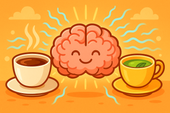
The Role of L-Theanine and Caffeine in Daily Motivation
Cortisol — often called the “stress hormone” — is both your alarm system and your reset button ⚡. It keeps you alert in the morning and helps you recover after challenges, but when it stays high too long, it drains your mood and energy. Learn how to balance cortisol naturally for steady focus, calm, and motivation. 🌿
-
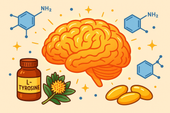
Supplements That Support Dopamine for Drive and Reward
Curcumin — the golden compound in turmeric — is more than a spice 🌿✨. It’s a powerful anti-inflammatory that protects dopamine neurons, supports brain clarity, and enhances mood. Learn how curcumin’s antioxidant properties help stabilize energy, reduce brain fog, and promote emotional resilience naturally. 🌼
-
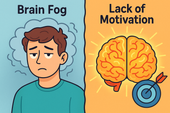
Brain Fog vs Lack of Motivation: What’s Really Holding You Back?
Hormones are the body’s invisible messengers — shaping energy, mood, focus, and motivation 🧠🌿. When they’re balanced, you feel clear, confident, and emotionally steady. Learn how key hormones like cortisol, serotonin, dopamine, and estrogen interact to influence your mental well-being and what you can do to keep them in harmony naturally. ✨
-
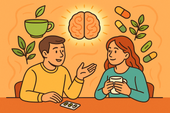
Supplements for Staying Collected During Disagreements
Science helps us understand why we feel, react, and change 🌿🧠. From brain chemistry to neurotransmitters and hormones, every emotional response has a biological root. Explore how research in neuroscience and psychology reveals practical ways to stay balanced, focused, and emotionally strong in daily life. 🔬✨
-

Managing Anger While Traveling
Supplements can help calm your nervous system and keep your emotions balanced while on the go 🌿. From magnesium and ashwagandha to L-theanine and omega-3s, learn how natural nutrients support stress resilience, focus, and emotional control — even through long flights, delays, and unpredictable travel days. ✈️
-
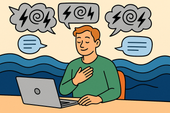
How to Keep Your Temper in Online Debates
Supplements can do more than fill nutritional gaps — they can help balance your energy, focus, and stress response naturally 🌿. From adaptogens to amino acids, the right nutrients support your brain chemistry and hormonal harmony for calm, steady productivity. Discover how supplements can build long-term resilience without the crash. ⚡🧠
-

Supplements to Stay Calm Before Public Speaking
Breathwork is one of the simplest yet most powerful tools for calming pre-performance stress 🌬️. By slowing and deepening your breathing, you lower cortisol, steady your heartbeat, and re-center your mind. Learn the science behind how controlled breathing activates your parasympathetic nervous system — helping you speak, perform, or focus with grounded confidence. 🌿
-

How to Handle Customer Service Stress Without Losing Your Cool 💬🧘♀️
Customer service can test even the calmest person’s patience. 😤 Learn how to handle difficult clients and daily pressure without losing your cool — through better mindset management, calming breathwork, and practical communication tools. Stay grounded, protect your energy, and transform stress into strength. 🌿
-
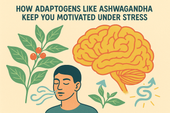
How Adaptogens Like Ashwagandha Keep You Motivated Under Stress
Feeling overwhelmed and unmotivated? 🌿 Discover how adaptogens like Ashwagandha can help you stay centered, focused, and energized under stress. Learn how supplements, breathwork, and therapy work together to restore your natural motivation and help you thrive — even during life’s toughest moments. 💪✨
-
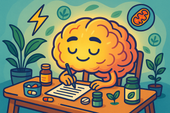
Supplements That Support Long-Term Productivity Without the Crash ⚡🌿
Cortisol — your body’s main stress hormone — can be both your best friend and worst enemy. ⚡ When balanced, it keeps you focused, energized, and ready to act. But when it stays high for too long, it leads to fatigue, anxiety, and emotional crashes. Learn how to regulate cortisol naturally through supplements, sleep, and stress management to maintain calm, steady productivity. 🌿
-
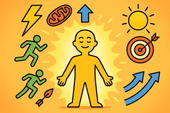
Why Energy Levels and Motivation Go Hand in Hand ⚡🧠
B-vitamins are the brain’s spark plugs 🔋. They turn food into fuel, support neurotransmitter production, and keep your mood, energy, and focus balanced. Learn how vitamins like B6, B9, and B12 work together to power the nervous system, reduce fatigue, and keep motivation high. 🌿
-
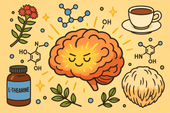
The Science of Motivation: Can Nootropics Help You Stay Focused? 🧠⚡
Nootropics are nature’s tools for sharper thinking and sustainable focus 🧠🌿. From Rhodiola and Lion’s Mane to L-theanine and Bacopa, these brain-boosting compounds enhance motivation, memory, and stress resilience. Learn the science behind how nootropics work — and how to use them safely for peak mental performance and clarity. ⚡
-
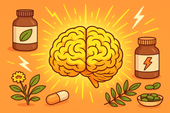
How Natural Supplements Can Boost Your Daily Drive
Cortisol is your body’s main stress hormone — powerful, necessary, but often misunderstood. ⚡ When balanced, it keeps you alert and energized; when chronically elevated, it drains mood, motivation, and focus. Learn how to regulate cortisol naturally through nutrition, supplements, and calming lifestyle habits for steady energy and emotional balance. 🌿
-
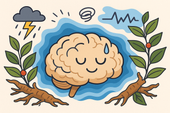
Ashwagandha for Stress and Low Mood
Breathwork is more than a relaxation tool — it’s a way to rewire your nervous system. 🌬️ Through intentional breathing, you can reduce stress hormones, improve focus, and calm emotional turbulence. This guide explores the science of breathwork and its powerful effects on mental clarity, resilience, and emotional regulation. 🌿
-
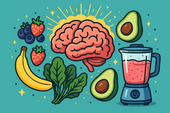
Mood-Boosting Smoothie Recipes
Your blood sugar affects far more than energy — it influences mood, focus, and emotional stability too 🍎. Learn how maintaining balanced glucose levels supports brain health, reduces anxiety, and prevents emotional crashes. Discover the foods and habits that keep your mind calm and your energy steady throughout the day. 🌿
-
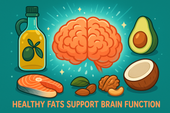
How Healthy Fats Support Brain Function
Your brain thrives on healthy fats 🧠💧. From omega-3s to MCTs, the right fats enhance focus, memory, and mood while protecting against inflammation and aging. This article explores how good fats — like those from olive oil, salmon, avocado, and nuts — build sharper thinking, emotional balance, and lasting brain vitality. 🌿
-
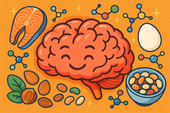
The Role of Protein in Mental Clarity
Protein isn’t just for muscles — it’s for your mind. 🧠 This guide explores how amino acids from high-quality protein fuel neurotransmitters, stabilize mood, and sharpen focus. Learn how balanced protein intake supports dopamine, serotonin, and energy regulation to boost mental clarity and emotional stability naturally. 🍳🌿
-
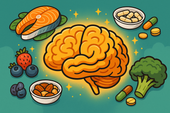
Nutrients That Support Emotional Stability
Your emotions are built from nutrients as much as from thoughts 🌿. This science-backed guide reveals the vitamins, minerals, and healthy fats that stabilize mood and reduce stress — from B-vitamins and magnesium to omega-3s and probiotics. Learn how balanced nutrition supports neurotransmitters, strengthens resilience, and promotes lasting calm and clarity 🧠✨.
-
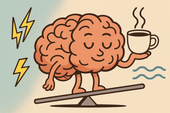
How Caffeine Affects Your Mood ☕
Your morning coffee might lift your spirits — but what’s really happening inside your brain? ☕ This in-depth guide explores how caffeine affects mood, motivation, dopamine, and stress. Learn how to enjoy caffeine mindfully without triggering anxiety, burnout, or emotional crashes. Discover the science behind your energy highs and lows — and how to find calm, sustainable focus. 🌿
-
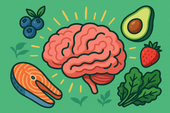
The Best Anti-Inflammatory Diet for Mental Health
Inflammation doesn’t just affect your body — it impacts your mood, focus, and emotional resilience too 🌿. This comprehensive guide reveals how an anti-inflammatory diet can support mental health by reducing neuroinflammation, balancing gut bacteria, and stabilizing blood sugar. Learn which foods to eat (and which to avoid) to protect your brain, boost serotonin, and promote lasting calm. 🧠✨
-

Why Sugar Spikes Can Worsen Depression
Sugar highs can make you feel good for a moment — but what comes next can fuel emotional crashes and deepen depression 🍭. This article explains how blood sugar spikes disrupt brain chemistry, increase inflammation, and destabilize serotonin. Learn how food, supplements, breathwork, and therapy can help you break the sugar–mood cycle and restore lasting emotional balance 🌿.
-
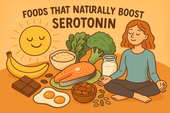
Foods That Naturally Boost Serotonin
Serotonin isn’t just a brain chemical — it’s your body’s built-in mood stabilizer 🌞. This in-depth guide explores how natural foods like salmon, eggs, bananas, and dark chocolate can elevate serotonin levels, while gut health, key nutrients, supplements, breathwork, and therapy create the perfect synergy for calm and emotional balance. Learn how to support your mind through diet, lifestyle, and mindset — naturally. 🌿
-
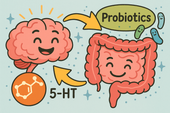
Probiotics for Mood Balance
-
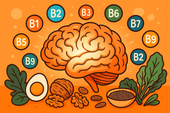
B-Vitamins and Their Role in Mental Health
Methylation is one of your body’s most important biochemical processes — influencing mood, energy, and focus. Powered by B-vitamins like B6, B9, and B12, it helps your brain create serotonin, detox efficiently, and maintain emotional balance. 🌿
-
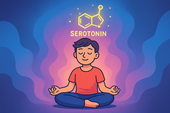
5-HTP for Serotonin Support
Calm isn’t just an emotion — it’s a physiological state where your body and mind finally sync in peace. By slowing your breath, softening your thoughts, and creating safety within, you restore the deep relaxation your nervous system craves. 🌿
-

St. John’s Wort for Mild Depression
Antidepressants can be life-changing for many — but understanding how they work and what natural options like St. John’s Wort can complement them is key. Learn how both approaches affect brain chemistry, mood balance, and long-term emotional wellness. 🌿
-
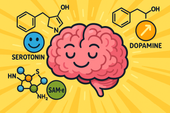
SAM-e: A Natural Mood Booster
Emotional regulation is the art of staying calm and grounded, even when life feels chaotic. By balancing your brain, body, and breath, you can respond with clarity instead of reacting from stress — building real emotional resilience and inner peace. 🌿
-

Rhodiola Rosea for Emotional Resilience
Neuroplasticity is your brain’s ability to grow, adapt, and heal — even after stress or trauma. Every thought, emotion, and habit reshapes your neural pathways, helping you build stronger emotional resilience, sharper focus, and lasting mental balance. 🌿
-
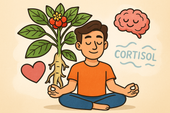
Ashwagandha for Stress and Low Mood
Adaptogens are nature’s stress balancers — powerful herbs like ashwagandha, rhodiola, and reishi that help your body adapt to tension, fatigue, and change. By regulating cortisol and supporting your nervous system, they build calm focus and emotional resilience from the inside out. 🌙
-
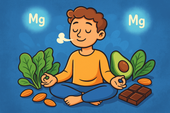
Magnesium’s Role in Emotional Regulation
Neuroscience helps us understand why we feel, think, and react the way we do. From brain chemistry and neural circuits to stress responses and emotional learning, the science of the brain reveals how our minds can heal, grow, and find balance. 🌿
-
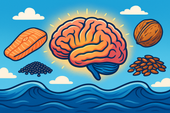
Omega-3 Fatty Acids and Emotional Well-Being
Nutrients aren’t just fuel — they’re communication signals that tell your brain and body how to function. From magnesium and vitamin D to omega-3s and B vitamins, the right mix of nutrients helps calm your mind, balance hormones, and support emotional and physical well-being. 🌙
-
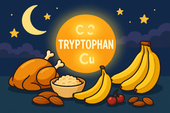
The Role of Tryptophan in Sleep Health
Mental health isn’t just the absence of illness — it’s the foundation of calm, focus, and emotional resilience. From managing stress and anxiety to nurturing self-compassion, understanding your mental well-being is the first step toward a balanced, more peaceful life. 🌿
-

Nutrients That Promote Nighttime Relaxation
Potassium does more than balance fluids — it also helps your body and mind relax at night. By calming nerves, reducing muscle tension, and supporting steady heart rhythm, potassium-rich foods like bananas, sweet potatoes, and coconut water can promote deeper, more restful sleep. 🌙
-

Sleep-Friendly Smoothie Recipes
Melatonin is your body’s natural sleep signal — a hormone that tells your brain when it’s time to rest. Learn how melatonin works, which foods and habits boost its production, and how to use it wisely for deeper, more restorative sleep without dependence. 💤
-
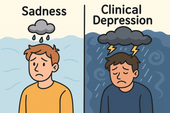
The Difference Between Sadness and Clinical Depression
Your emotions aren’t just in your mind — they’re written in your brain chemistry. Serotonin, dopamine, and GABA work together to regulate mood, motivation, and calm. When they fall out of balance, you may feel anxious, fatigued, or low. Learn how these brain chemicals influence your mental health and what you can do to restore harmony naturally. 🌿
-
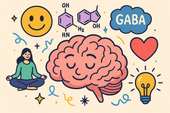
How Brain Chemistry Influences Mood
Your brain is a symphony of neurotransmitters — serotonin, dopamine, GABA, and more — working together to shape how you think and feel. When they’re balanced, you experience calm focus and emotional stability. When they’re not, mood swings and fatigue can follow. Learn how to naturally support these vital messengers for better mood and mental clarity. 🌿
-
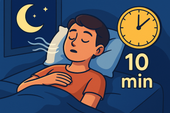
How to Fall Asleep in Under 10 Minutes
The military knows a few secrets about falling asleep fast — and they work even in chaos. This article explores the science behind rapid relaxation, including the famous “Military Sleep Method,” which teaches your body to shut down stress and rest on command. Learn how discipline, breath, and focus can help anyone fall asleep in minutes. 🌙
-
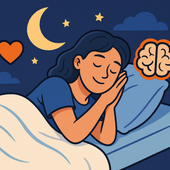
Why Emotional Resilience Improves Sleep
Emotional resilience isn’t just about mental strength—it’s also a key ingredient for better sleep. When your emotions are balanced, your body releases fewer stress hormones, your mind quiets faster, and your sleep becomes deeper and more restorative. Learn how to cultivate calm through mindset, breathwork, and daily habits. 🌙
-
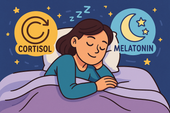
The Connection Between Stress Hormones and Sleep
Chronic stress can quietly reshape your body’s chemistry, raising cortisol, disrupting sleep, and draining your energy. This guide explores how long-term stress affects your nervous system, hormones, and rest—and how to restore calm through breathwork, nutrition, and daily recovery rituals. 🌿
-
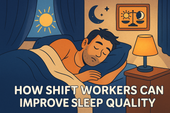
How Shift Workers Can Improve Sleep Quality
For shift workers, caffeine can be both a lifeline and a sleep disruptor. Learn how to use it strategically—boosting alertness during work hours without sabotaging rest. This guide explores timing, dosage, and smarter natural alternatives to keep your energy steady and your sleep restorative. 🌙
-
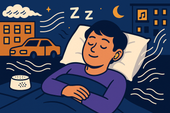
How to Sleep Better in a Noisy Environment
Living in a noisy area doesn’t mean sacrificing your rest. Learn practical and natural strategies to sleep better in loud environments—from using sound masking and breathwork to creating calming rituals that help your brain tune out the chaos. Find inner silence even when the world outside won’t quiet down. 🌙
-
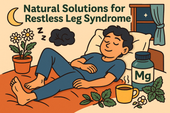
Natural Solutions for Restless Leg Syndrome (RLS)
Struggling to sleep deeply and wake refreshed? This soothing guide explores how the body restores itself during quality sleep—and how to support it naturally. Learn about the science of rest, the role of nutrients, and the rituals that promote deep, uninterrupted slumber. 🌙
-
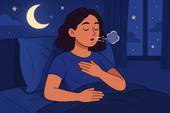
How to Overcome Middle-of-the-Night Anxiety
Middle-of-the-night anxiety can make even the calmest mind spiral into worry. This guide reveals practical, evidence-based techniques to help you stop the 3 A.M. overthinking loop—from breathwork and journaling to herbal supplements and therapy-based tools. Learn to retrain your nervous system and find peace when the world is asleep. 🌙
-

The Perfect Evening Herbal Blend
Discover the calming power of nature in your teacup. The perfect evening herbal blend combines chamomile, lemon balm, lavender, and adaptogens like ashwagandha to relax your body and quiet your mind before bed. Learn how to craft and customize a soothing, sleep-enhancing tea ritual that helps you unwind, restore, and wake up refreshed. 🌙
-
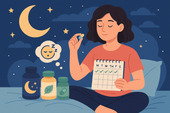
How to Cycle Sleep Supplements for Maximum Effectiveness
Wondering why your sleep supplements stop working after a while? This guide breaks down how to cycle sleep aids like melatonin, magnesium, and ashwagandha for consistent, long-term results. Learn when to rest your body, how to prevent tolerance, and what natural methods—like breathwork and therapy—enhance your sleep cycles. 🌙
-
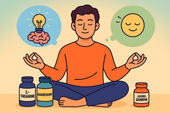
The Best Supplements for Both Relaxation and Focus
Calm your mind and sharpen your focus with the perfect blend of natural supplements. From L-theanine and magnesium to Rhodiola and Lion’s Mane, this science-based guide shows how to achieve relaxation and clarity at the same time. Discover stacks that support your nervous system, balance mood, and keep your mind laser-focused without the crash. 🌿
-

How to Sleep Better During Travel
Traveling can be thrilling—but sleepless nights can ruin even the best trips. From supplements like magnesium and melatonin to soothing breathwork and therapy-based techniques, this guide shows you how to sleep deeply on planes, in hotels, or across time zones. Learn to calm your body, reset your circadian rhythm, and build rest rituals that work anywhere in the world 🌙
-
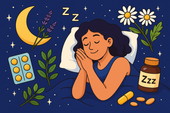
Improving Sleep in Menopause with Supplements
Menopause can make peaceful sleep feel impossible — but balance is within reach 🌿. This article explores how supplements like magnesium, ashwagandha, and black cohosh can ease night sweats, calm the mind, and restore your natural sleep rhythm during hormonal changes.
-
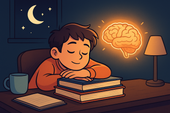
Sleep Support for Students During Exams
Exam stress can make it hard to rest — but sleep is what helps you perform your best 💤. This article explains how to improve sleep quality during exams through better study habits, natural supplements, breathwork, and therapy tools to calm the mind and sharpen focus.
-

Rest Strategies for Entrepreneurs
Entrepreneurs often burn out chasing their vision — but rest is the real fuel for success 🌙. This article explores science-backed recovery strategies for founders, including sleep, breathwork, therapy, and nutrition techniques that sharpen creativity and sustain performance.


















































